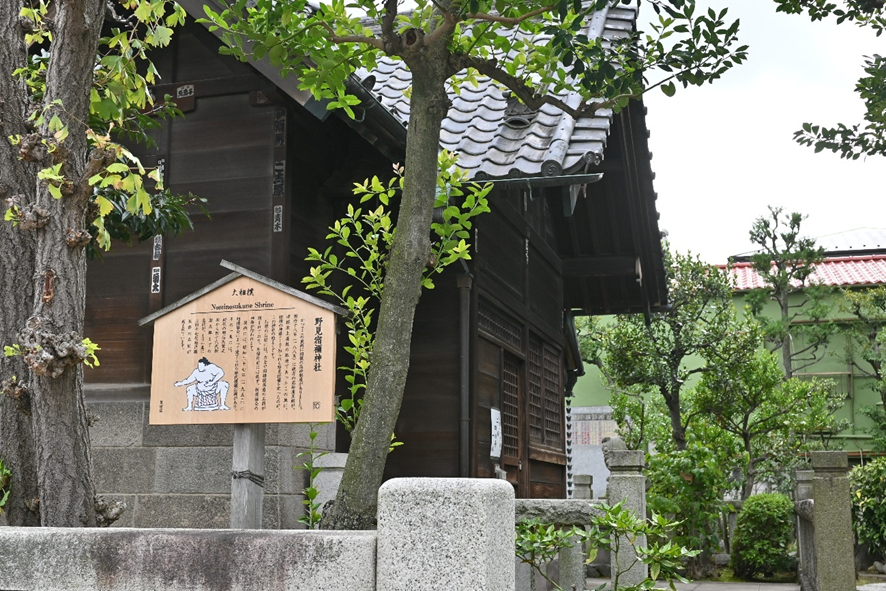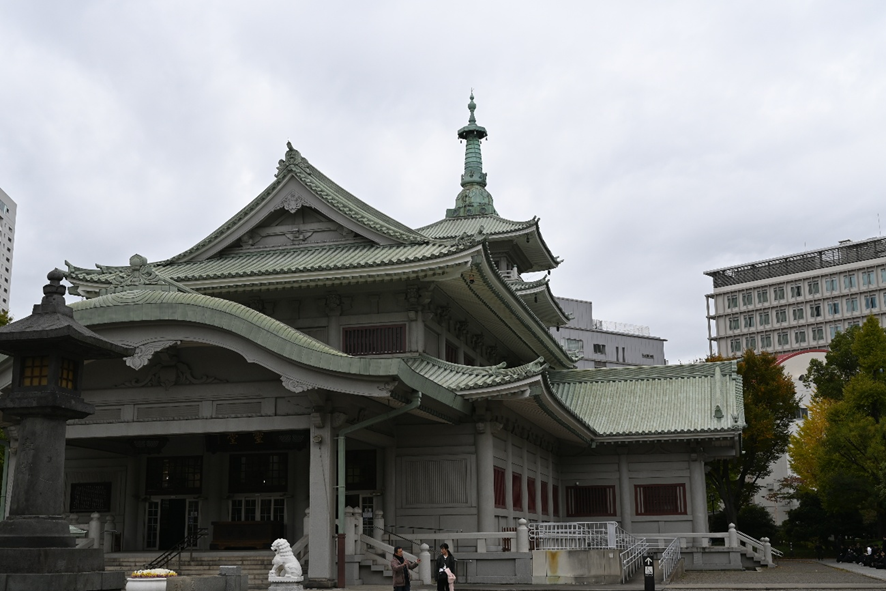Stroll around Ryogoku ~November 2025~
- 羽場 広樹

- Nov 12
- 5 min read

I have only ever been to Ryogoku to watch sumo, but I decided to take a walk around the quiet Ryogoku area on a weekday when there was no sumo tournament.

As November approaches, NHK's taiga drama series is reaching its final stretch. The protagonist of "Berabou," Tsutaya Juzaburo, is in his twilight years, and the story will depict Edo after the fall of Matsudaira Sadanobu. The script and cast are excellent, but what's particularly noteworthy right now is the comedian Kukki playing Katsushika Hokusai. Tsutaya Juzaburo not only helped Kitagawa Utamaro achieve success, but also introduced the fledgling Katsushika Hokusai to the world by entrusting him with illustrating Takizawa Bakin's books.

I don't know how much Hokusai will be involved in the program over the next month, but I'm looking forward to Kukki's eccentric performance. About 300 meters down Hokusai Street, which stretches from Ryogoku Station on the Oedo Line, you'll find the Sumida Hokusai Museum, located on the former site of the Tsugaru clan's main residence. They were holding a special exhibition entitled "The Lineage of Bijinga Surrounding Hokusai." There's also an exhibition related to "Berabou," which is on until November 24th, so I recommend it to anyone interested. Hokusai is said to have influenced the Impressionists, and over 80% of the visitors are from overseas, suggesting his international popularity.

On the same grounds of the Tsugaru domain residence, there is Nomi no Sukune Shrine, which was established by Takasago Oyakata, who had a stable nearby, and which was established by Izumo Taisha. Nomi no Sukune, who was in Izumo, was ordered by Emperor Suinin to wrestle with Taima no Kehaya, and after winning, he became a servant of the emperor, which was the first sumo match held in Japan.

The Japan Sumo Association has engraved the names of past Yokozuna on a stone monument, and the names of my hometown heroes, Wajima and Onosato, are also engraved on it. I am overwhelmed with emotion.

The name Ryogoku comes from the border between Musashi and Shimousa. For a long time, it was thought that the Sumida River was the border, but it turns out that it was actually about 3km east, and the southern part of Sumida Ward, including Ryogoku Station, was originally part of Musashi Province. In 1686 (the third year of the Jokyo era), the shogunate submitted a request to the Imperial Court for permission to move the border to the Edo River, which was accepted. It is interesting that such a procedure was carried out during the Edo period. This was likely done in light of the completion of the so-called Tone River Eastward Relocation Project, as well as flood control and water use (including water transportation) projects for rivers flowing into Tokyo Bay, and the fact that Edo continued to expand across the country.

The Great Fire of Meireki (1657, Meireki 3), which claimed the lives of over 100,000 people, prompted the construction of Ryogoku Bridge. Until then, the only bridge across the Sumida River was Senju Ohashi, and many people were unable to escape. Shogun Ietsuna took pity on the victims and built a Nembutsu-do hall across the bridge, which became Ekoin Temple. Sumo apparently gained popularity as a commercial entertainment event during the Kansei period, but regular performances had been held at Ekoin Temple since 1833 (Tenpo 4), leading to the construction of the first Kokugikan (Sumo Hall) here (1909, Meiji 42). After the war, the Kokugikan was temporarily moved to Kuramae on the opposite bank of the Sumida River, but the current Kokugikan was built in 1985 (Showa 60), and sumo returned to Ryogoku.

At Ekoin Temple, there is the grave of Santo kyoden, a character from the novel "Berabou." It is hidden by the graves of Joruri performers Takemoto Gidayu and Nezumi Kozo.

Kyoden bought out prostitutes from Yoshiwara twice in his life. Screenwriter Yoshiko Morishita based the story on historical facts, but she portrayed the characters' personalities vividly, making the drama's appealing quality largely down to the script.

If you go around behind Ekoin Temple, you will come to the site of the residence of Kira Yoshihisa, the setting of "Chushingura." Shortly after the sword attack in the palace, Yoshihisa retired and moved his residence from Gofukubashi to Ryogoku. The Kira family was originally a branch of the Ashikaga Shogunate and the guardians of Mikawa, so Ieyasu was careful about how he was treated, and although he was a high-ranking hatamoto with a stipend of 4,200 koku, he was given a territory in his ancestral land in Mikawa and treated him well.

After the raid, the 8,000 square meter retirement home was sold to a townsman. The patriots carried Yoshihisa's head and crossed the Ichinohashi Bridge to Sengaku-ji Temple.

Later, Katsu Kaishu was born near the site of the Kira residence. Kaishu's biological father was adopted by the Katsu family from the Otani family, a vassal of the shogunate, but Kaishu was raised at his father's home until he was seven years old.

Although Katsu Kaishu's character has been met with both praise and criticism, his contributions to the Meiji Restoration are unquestionable, but it was none other than Oguri Kozukenosuke Tadamasa who built the foundations of modern Japan as a shogunate retainer. He will finally be featured as the protagonist in the 2027 taiga drama "The Traitor Shogunate Retainer." Four years ago, Takeda Shinji played the role in "Seiten wo Tsuke," but this time he will be played by Matsuzaka Tori, and Katsu Kaishu by Osawa Takao.
I am already looking forward to seeing them. I visited Oguri's family temple, Tozenji, last year, and I'm sure the head priest was pleased.

Heading north from Ryogoku Station, you will come across museums that tell the story of the Great Kanto Earthquake(1923) and the Tokyo Air Raids(1944~1945), as well as memorial halls built as ossuaries for the victims. Including Ekoin Temple, Ryogoku is also a place of repose for the souls of those affected by the great disaster that engulfed Edo and Tokyo.

Adjacent to the garden is a Japanese garden known as the Former Yasuda Garden. The garden was designed by Honjo Munesuke, the younger brother of Tama (Keishoin), who married Shogun Iemitsu and became the mother of Tsunayoshi. He was selected from the ranks of a vassal of the noble Nijo clan and became the feudal lord of the Hitachi Kasama domain with a fief of 50,000 koku. Keishoin was a deeply devout man who restored and repaired many temples and shrines, including the construction of Gokokuji Temple, repairs to Toshodaiji Temple, and assistance to Muroji Temple, among many others. She is said to be the inspiration for the "Tama no Koshi" (marriage of a greengrocer's daughter to the Shogun), but in fact she was from a samurai family that was a retainer of the aforementioned noble.

In the Meiji era, the property changed hands from Marquis Ikeda, the former lord of Okayama Domain, to the Yasuda Zaibatsu, and has been open to the public since 1927. It might be stylish to view the garden with the Kokugikan and Tokyo Skytree as a backdrop before watching a sumo match.





Comments